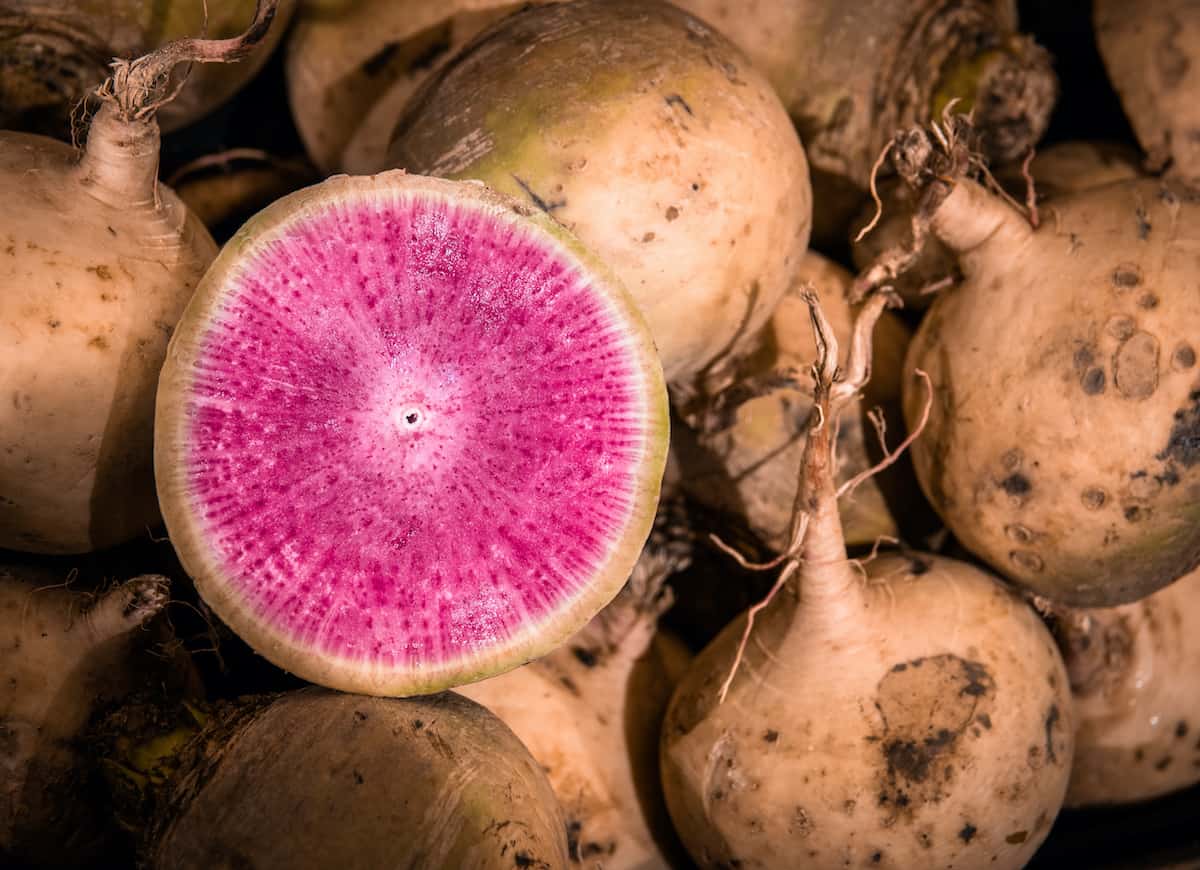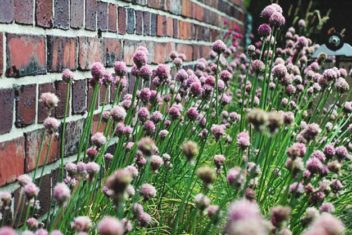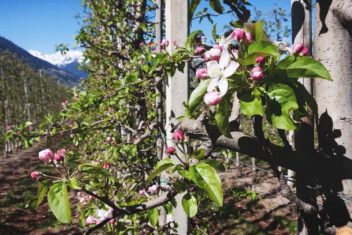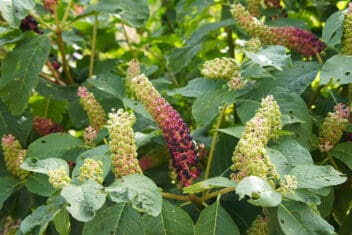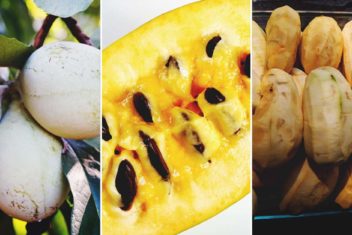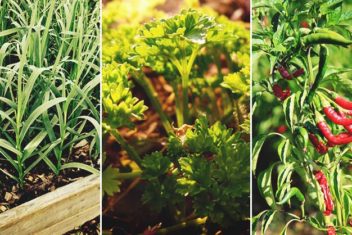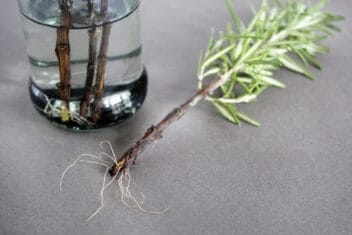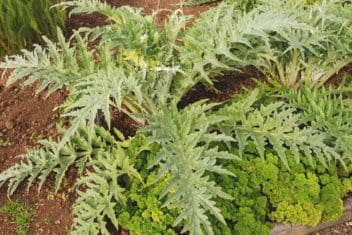Carrots, beets, turnips, and potatoes are ubiquitous in edible gardens around the world. But what about jicama, sunchokes, and scorzonera? These may already be staples to some, but are considered rather unusual root vegetables to those who’ve never heard of them.
If you love your roots but want to expand your garden—as well as your palate—read on! You’ll discover some rare variations on old favorites, and hopefully find some new treasures to explore as well.
1. Hinona Kabu Turnips
Those of us who are already familiar with turnips usually think of them as round or slightly egg-shaped. Not these babies! Hinona Kabu turnips are long and spindly, like skinny carrots.
They’re remarkably easy to grow, even in denser, clay-heavy soils, as long as they get enough sunshine and a fair bit of water.
These heirlooms go back to the early 1700s, so be sure to get your hands on some seeds if and when you can find them!
Furthermore, they’re spectacular when pickled, so you can add some bright pink deliciousness to your pantry.
2. Uzbek Golden Carrots
Do you like carrots? If you do, but you’re looking for something a bit different, check out these bright yellow wonders! Their blunted shape is likely quite different from the long, pointy carrots you’re used to.
That said, they’re sweet and crunchy, and since they’re originally from Uzbekistan, they thrive in cooler weather. This makes them ideal for your autumn vegetable garden.
If you’ve grown carrots before, you know that they like loose, well-draining soil with a high sand content. This species is similar, but it’s much more tolerant of different soil types, as long as they also drain well.
As far as unusual root vegetables go, this one bridges the gap between familiar and exciting—great for picky eaters and cautious gardeners alike.
3. Chinese Red Meat Radishes
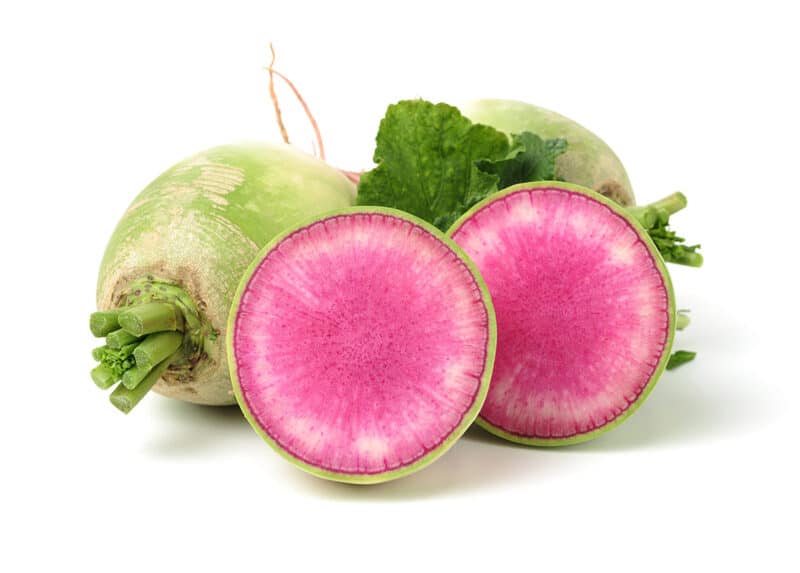
Hey, color lovers—be sure to check out these stunners. You may have come across them before: they’re also referred to as watermelon radishes, both because of their size and for their red flesh paired with bright green skins.
The flesh is sweet and crisp, and tastes wonderful both raw and cooked. Try them sliced thinly on buttered toast, or roasted with your favorite herbs.
Although radish greens are all edible, these can be quite spiky and need to be handled with gloves like stinging nettles. Once cooked, however, the spiky bits soften enough to eat.
Radishes all grow quite quickly and thrive in cooler weather. In fact, they actually get sweeter when exposed to a frost. Add these to a sunny spot in your fall garden and you won’t be disappointed.
4. Celeriac

If you’re looking to stock your winter cellar with unusual root vegetables, be sure to add celeriac to your list. Yes, it looks weird. Yes, most people have no idea what to do with it… but it’s delicious, thrives in cool weather, and matures in about 100 days.
That means if you plant it in the summer and cultivate it in a cold frame or greenhouse, you can harvest it in time for Thanksgiving dinner.
Celeriac has a gorgeous, celery-like flavor, and is wonderful in salads and soups, as well as roasts. It’s a heavy feeder, so be sure to work plenty of compost into your soil before cultivating it. This plant can be a bit fussy, so be sure to refer to our celeriac growing guide to ensure that yours grows well.
5. Chiogga Beets
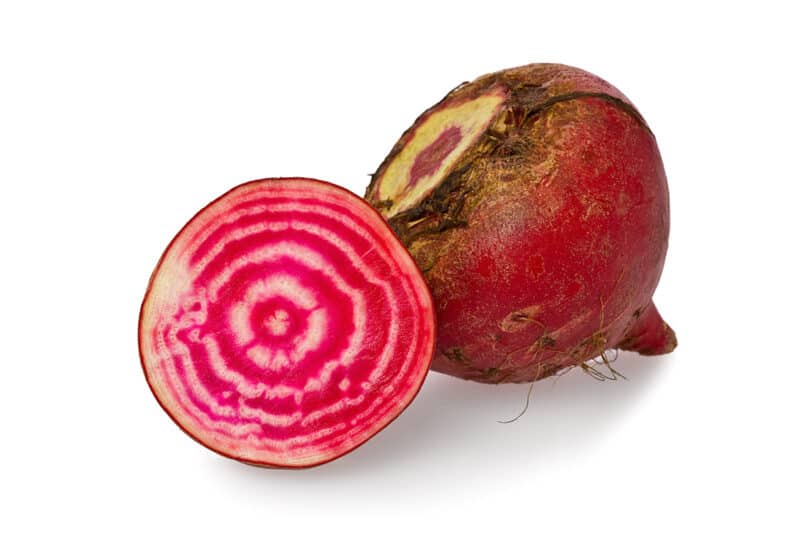
Aren’t these absolutely gorgeous? Most of us are used to deep red beets, but Chioggas are delightfully stripey. Their bright, concentric circles make them a gorgeous addition to the dinner table, and they make the prettiest pickled preserves as well.
In fact, their mild, sweet flavor lends well to a wide variety of recipes. For example, although they originated in northern Italy, I use them to add a splash of fun to traditional Russian borscht.
Beets generally need loose, nutrient-dense, well-draining soil and a lot of full sunshine to thrive best. Their seeds germinate a bit more slowly than other varieties, but they’re well worth the wait!
Additionally, their greens are just as delicious as the roots, and can be eaten raw in salads, or cooked like spinach.
6. Russian Giant Scorzonera
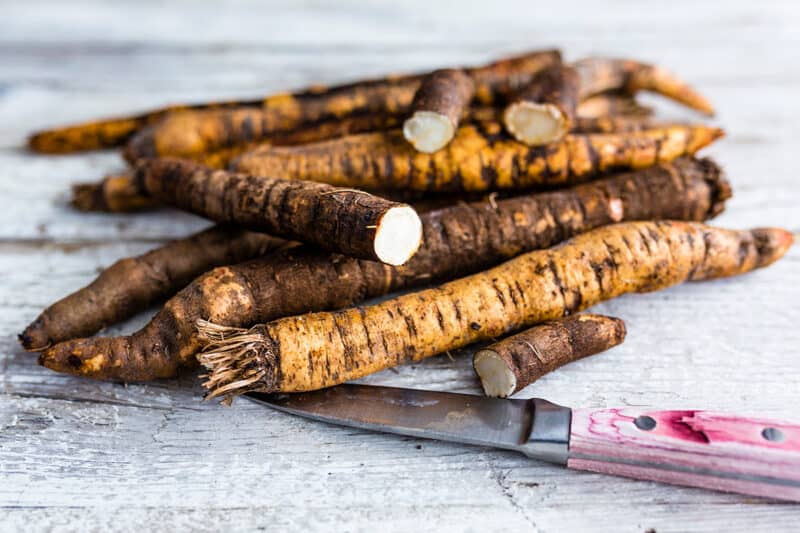
Since we’re eyeing different, unusual root vegetables, how would you feel about one that tastes like oysters? Seriously, this plant—also known as black salsify—has an incredible flavor and texture.
The taproot gets quite long, so you either need well-dug beds with plenty of sand and compost, or raised beds with the same, at least a foot deep.
Scorzonera, and its cousin salsify, is a cool-weather crop, so it’s another to add to your autumn garden. Just make sure it’s in a sunny spot, as it needs a ton of sunshine to thrive.
As an additional tip, make sure to harvest yours just as it’s ripening to maturity. If you leave it in the soil too long, it can toughen up rather unappetizingly.
7. Cassava
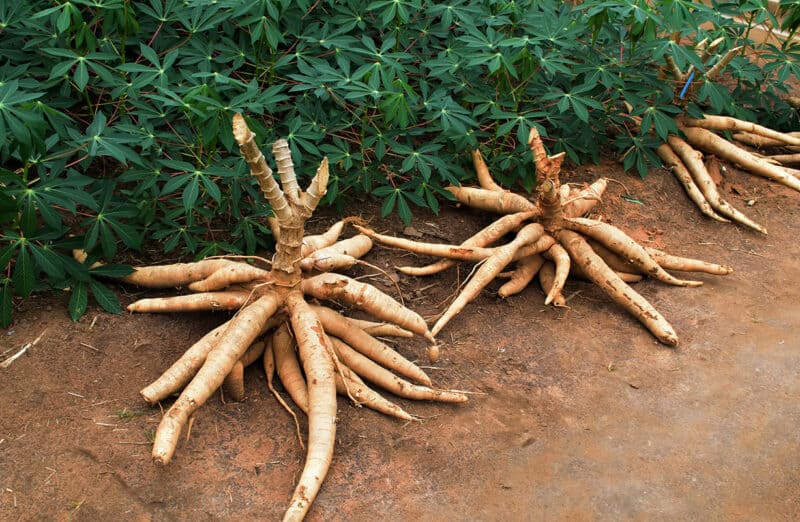
If you’re fortunate enough to live in a growing zone between 8 and 11, try growing cassava. Although it’s quite popular in many parts of the world, many people in the northern USA, Canada, and Europe would have it on their list of unusual root vegetables.
Probably because we’re in cooler growing zones and don’t have the opportunity to grow it!
These plants are also heavy feeders, and the roots get huge. As a result, you need a lot of space, as well as rich, loamy, compost-rich soil, and a hot, humid environment to grow them in.
Cassava root is remarkably versatile and can be used to create countless different dishes. It’s popular in Paleo diets, and since it’s naturally gluten-free, it can be dried and used as flour in Celiac-friendly recipes.
You just need to make sure to boil and drain the raw root really well before using it, as it contains quite a bit of cyanide in its raw state.
8. Sunchokes/Jerusalem Artichokes
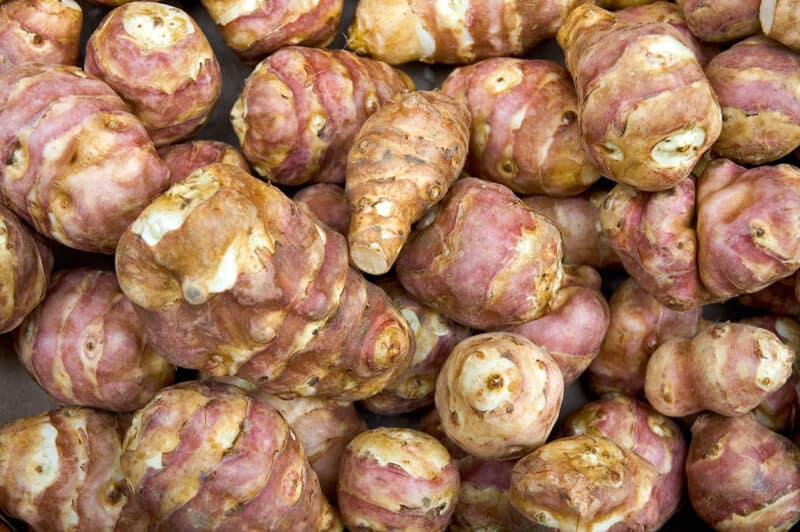
These have been a staple food for Indigenous peoples for millennia, and are a delicious addition to any decorative or edible garden.
In fact, Jerusalem artichokes are ideal for clandestine food gardening projects, as their flowers look a lot like Black-Eyed Susans, so they can even be planted in front yards without the neighbors scowling at you.
Keep in mind that sunchokes need to be planted from tuber pips rather than from seed. They do well in pretty much any soil as long as they have a lot of sunshine, and since they’re perennial, they’ll keep coming back for years.
Heads up: they can cause some pretty intense gastric issues in some people. If you haven’t eaten them before, try eating just a few to see how you react to them.
Preferably when you’re at home.
Alone.
9. Pusa Jamuni Radishes
For those of you who love purple, these are must-haves for your garden. This Indian radish is a stunning violet hue and has enough of a fiery bite to satisfy even the pickiest spice lovers. Its deep color speaks volumes about its antioxidant levels, and also makes it a great addition to salads, salsas, and more.
This radish is sensitive to heat, and so it’s best as an autumn crop. You can also grow it in springtime if you’re in a cooler climate. Just don’t plant it at the height of summer or it’ll bolt.
Imagine a few of these adding a bit of both fire and color to kimchi or pickled vegetables!
10. Skirret
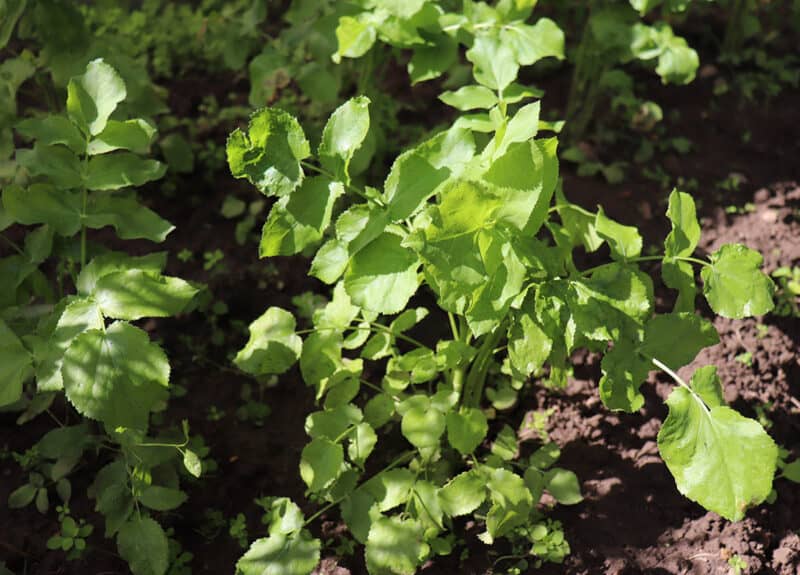
We touched upon this one in our article on medieval vegetables, so be sure to check that one out as well. Its name comes from the Middle English word “skirwhit”, meaning “white root”, which describes it rather perfectly.
This is among the more unusual root vegetables because it doesn’t have a long taproot like a parsnip or carrot. Instead, it has a bunch of long, spindly roots that dangle like skinny fingers. It loves rich soil with plenty of aged compost, but can thrive in poor soil as well, provided it gets enough light.
It’s a perennial, so you’ll get better yields from the second year and onward, and it’s easier to grow from root cuttings than from seed.
11. Touchstone Golden Beets
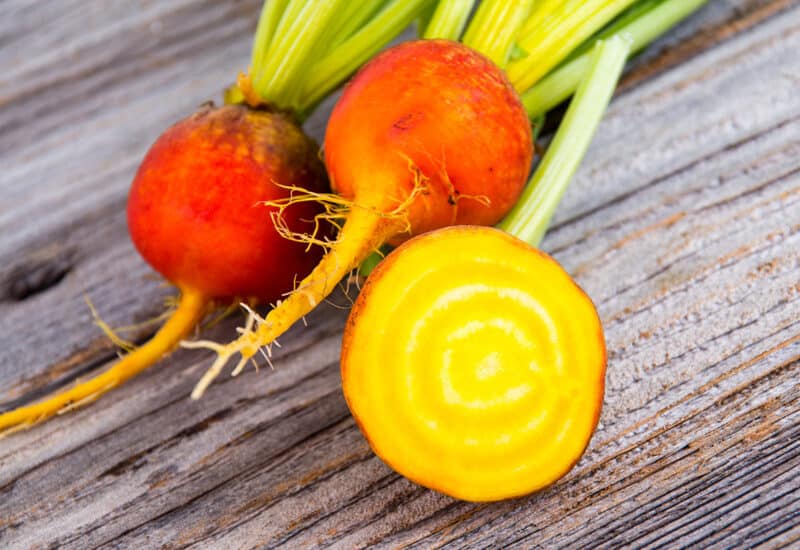
Golden beets are notoriously more difficult to cultivate than red ones, but the Touchstone variety is an exception to this rule. They’re sweet and juicy, with flavorful leaves, and are quite resistant to pests.
Unlike other beets, however, these beet seeds need to be germinated in a warmer environment. Try sowing them indoors in sterile seed starting medium, and transfer them outside once the seedlings are strong.
They’ll be ready to pick in 55 days, making them ideal for autumn harvests.
12. Peruvian Purple Potatoes

Potatoes are awesome. Purple potatoes take that awesomeness and paint them a rather glorious shade of purple-liciousness. Spuds come in all shades of the rainbow, but there’s something rather whimsical about the violet-hued ones, isn’t there?
Think of the culinary possibilities! Imagine these mashed, set atop a super-colorful veggie-filled shepherd’s pie. Or as fries. Tarte tatin anyone? The options are endless! And best of all, they have a lower glycemic index than regular potatoes, as well as higher antioxidant levels. Win-win, really.
Like all other potatoes, these beauties need a lot of sunshine to thrive properly: at least six hours of direct sunlight per day.
They need soft, well-drained, and well-aerated soil so the tubers can grow properly. If your soil is clay-heavy, you’ll need to amend it with perlite, sand, well-aged compost, and loam to achieve the ideal texture.
They’re quite heavy feeders, so you may need to nourish them with some phosphorus- and potassium- heavy fertilizer a couple of times during the growing season. Aim for a 10-20-20 N-P-K ratio, as they don’t need much nitrogen.
13. Jicama
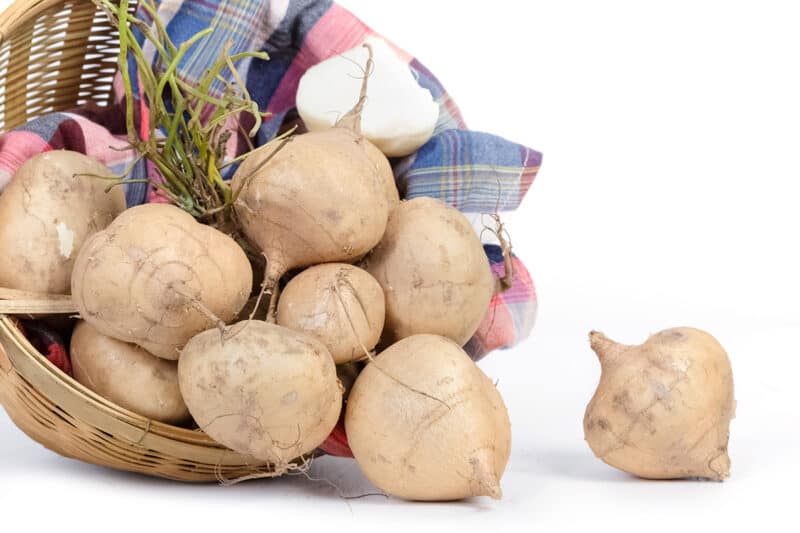
If you live in a warm, sunny location, and you’re fond of root vegetables, you really need to grow some jicama. It’s native to Mexico, so gardeners in growing zones 7 through 11 should be able to grow it quite easily.
This sweet, crunchy tuber is a heavy feeder, so it’s a good idea to work a lot of aged manure and compost into your soil. You’ll also need to provide it with a support structure like a trellis or similar, as the vines can get very heavy.
As you can see, there are many wonderful, unusual root vegetables to try out! Regardless of your growing zone or soil type, you’re certain to find a couple that you can add to your space. Choose small varieties like radishes for container gardens, amend the soil to suit the species’ needs, and you’ll be harvesting gorgeous, tasty roots in no time.
Happy growing!
